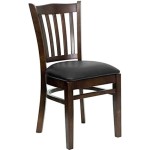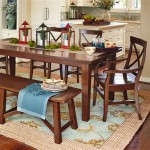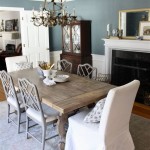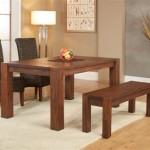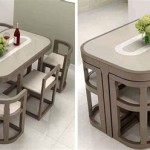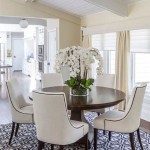Modern Wall Art: Elevating the Dining Room Experience
The dining room has evolved from a purely functional space into a central hub for connection, conversation, and shared experiences. As such, its design has become increasingly important, with homeowners seeking ways to infuse personality and style into the room's atmosphere. Modern wall art offers a dynamic and versatile tool for achieving this, transforming a simple dining area into a visually engaging and aesthetically pleasing environment. Choosing the right art can significantly impact the mood, flow, and overall design coherence of the dining room.
Selecting appropriate wall art requires careful consideration of various factors, including the size of the room, the existing color palette, the style of furniture, and the desired ambiance. Overwhelmed walls can feel chaotic and cramped, while sparsely decorated walls can appear bare and uninviting. The key is to find a balance that complements the space and reflects individual taste.
Understanding the Impact of Different Art Styles
The choice of art style significantly influences the overall tone of the dining room. Abstract art, with its focus on form, color, and texture, can introduce a sense of modern sophistication and visual interest. Large-scale abstract pieces can serve as a focal point, drawing the eye and creating a dramatic impact. Conversely, minimalist art, characterized by clean lines, simple shapes, and a muted color palette, can establish a serene and uncluttered atmosphere. This style is particularly well-suited for smaller dining rooms, as it avoids visual clutter and promotes a sense of spaciousness.
For those seeking a more traditional aesthetic, landscape paintings or botanical prints can add a touch of natural beauty and tranquility. These types of artwork can evoke a sense of calm and serenity, creating a relaxing dining environment. Black and white photography, on the other hand, offers a timeless and sophisticated option. Whether depicting portraits, landscapes, or still life compositions, black and white photographs can add a touch of elegance and drama to the dining room.
Beyond these, contemporary art encompasses a wide range of styles, from pop art to street art, offering opportunities for bold and expressive statements. Selecting art that aligns with the existing décor is crucial. Considering the style of the dining table, chairs, and other furniture will help ensure a cohesive and harmonious look. For example, a sleek, modern dining set might be complemented by abstract art or geometric prints, while a more rustic, farmhouse-style dining set might pair well with landscape paintings or vintage-inspired art.
Navigating Size, Scale, and Placement
The size and scale of the wall art should be proportionate to the dimensions of the dining room and the height of the walls. A large wall in a spacious dining room can accommodate a single, oversized piece of art or a curated gallery wall. A gallery wall, consisting of multiple smaller pieces arranged in a cohesive manner, can add visual interest and personality to the space. When creating a gallery wall, it is important to consider the spacing between the pieces and the overall composition.
In smaller dining rooms, it is generally best to opt for smaller or medium-sized artwork. Overly large pieces can overwhelm the space and make it feel cramped. A single, well-chosen piece of art can be just as impactful as a larger arrangement. The placement of the art is equally important. Eye-level placement is generally recommended, ensuring that the artwork is easily viewable and accessible. When hanging art above furniture, such as a sideboard or console table, it is important to leave sufficient space between the bottom of the artwork and the top of the furniture.
Consider the focal point of the dining room. This could be the dining table itself, a window with a scenic view, or a fireplace. The wall art should complement the focal point and enhance the overall aesthetic of the room. If the dining table is the focal point, consider hanging a piece of art directly above it to draw the eye and create a sense of visual balance.
Lighting plays a critical role in showcasing wall art. Natural light is ideal, but in the absence of ample natural light, artificial lighting can be used to highlight the artwork. Track lighting or spotlights can be directed towards the art to accentuate its colors and textures. Dimmers can also be used to adjust the intensity of the lighting and create different moods.
Color Palette and Harmonious Design
The color palette of the wall art should complement the existing colors in the dining room. The goal is to create a harmonious and visually appealing space. If the dining room has a neutral color scheme, such as white, gray, or beige, the wall art can serve as a pop of color. Bold and vibrant colors, such as red, orange, or yellow, can add energy and excitement to the room. Alternatively, softer and more muted colors, such as blues, greens, or purples, can create a sense of calm and tranquility.
If the dining room already has a strong color scheme, the wall art should either complement or contrast with those colors. Complementary colors, which are opposite each other on the color wheel, can create a dynamic and visually striking effect. For example, if the dining room is predominantly blue, a piece of art with orange accents can create a visually appealing contrast. Analogous colors, which are located next to each other on the color wheel, can create a more subtle and harmonious effect. For example, if the dining room is predominantly green, a piece of art with blue and yellow accents can create a sense of visual cohesion.
Beyond color, the texture of the wall art can also contribute to the overall design aesthetic. Paintings with thick impasto textures can add depth and dimension to the room, while prints on smooth paper or canvas can create a more refined and elegant look. Consider incorporating art that features different textures to add visual interest and tactile appeal to the dining room.
Framing is another important consideration. The frame should complement the artwork and enhance its overall presentation. Simple, minimalist frames are often a good choice for modern art, while more ornate frames can be used for traditional art. The color of the frame should also be considered. A frame that matches the color of the walls can help the artwork blend in seamlessly, while a frame that contrasts with the walls can help the artwork stand out.
Ultimately, the choice of modern wall art for the dining room is a personal one. The goal is to select pieces that reflect individual taste and create a space that is both visually appealing and conducive to conversation and connection. By carefully considering the factors outlined above, homeowners can transform their dining rooms into stylish and welcoming environments that enhance the dining experience.

Dining Room Wall Ideas That Will Make A Big Statement Decoist
:strip_icc()/127107347_378909933559802_5209338986625741338_n-d8e04eccf7274b2b91e5b75ec9ca40ef.jpg?strip=all)
29 Dining Room Wall Décor Ideas

Modern Abstract Elements Bohemian Botanical Wall Art Decoration Fine A Nordicwallart Com

20 Ways To Dress Up Dining Room Walls Wall Decor Hgtv

Dining Room Wall Art Ideas Inspired By Existing Projects

11 Great Gallery Wall Layout Ideas One Brick At A Time Farmhouse Style Living Room Dining

55 Dining Room Wall Decor Ideas Interiorzine

How To Add The Wow Factor Through Modern Wall Art

Main Blog Keep Up To Date With Our Dining Room Decor Modern Small Table

Minimalist Geometric Circles Abstract Wall Art Fine Canvas Prints Nordicwallart Com

